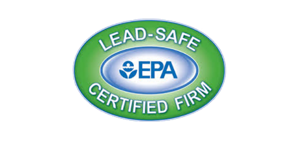Cleaning up after a flood can be a daunting task, but with the right approach, you can effectively restore your home and belongings. It’s important to take immediate action to minimize the damage caused by floodwaters and to ensure the safety of your living environment. Here are some key steps to consider when cleaning up after a flood:
Key Takeaways:
- Remove any carpet, upholstered furniture, or stuffed animals that came into contact with contaminated floodwaters.
- Dry out flooded areas within 48 hours to prevent mold growth.
- Throw away wet materials that can’t be cleaned and take photos for insurance purposes.
- Wash curtains, clothing, and bedding with hot soapy water and bleach if possible.
- Clean surfaces with soap or disinfectant and use fans to help dry damp areas.
Cleaning up after a flood requires thoroughness and attention to detail. By following these key steps, you can restore your property and belongings to their pre-flood condition. Remember to prioritize your safety by wearing protective clothing and gear, and consider seeking professional assistance for extensive mold or flood damage. Taking prompt action and documenting the damage will also help with insurance claims and necessary repairs.
The Flood Cleanup Process
The flood cleanup process involves several crucial steps that must be followed to minimize damage and promote a safe and healthy environment. When cleaning up after a flood, it’s important to remove any carpet, upholstered furniture, or stuffed animals that came into contact with contaminated floodwaters. These items can harbor bacteria and toxins that pose a risk to your health. Make sure to wear protective clothing and gear, such as gloves and masks, to avoid exposure to germs and chemicals.
Drying out flooded areas within 48 hours is crucial to prevent mold growth. Use fans and dehumidifiers to circulate air and remove excess moisture. Throw away wet materials that cannot be cleaned, as they can become a breeding ground for mold and bacteria. It’s also important to take photos of the damage for insurance purposes. This documentation will help you during the claims process.
Wash curtains, clothing, and bedding with hot soapy water and bleach if possible. This will help eliminate any contaminants that may have been brought in by the floodwaters. Clean all surfaces, including walls, floors, and furniture, with soap or disinfectant. This will further remove any remaining bacteria or mold spores. Be sure to check for water damage, especially in basements, and address any structural issues promptly.
If you’re dealing with a large amount of mold or extensive flood damage, it may be advisable to hire professionals. They have the expertise and equipment to handle these situations efficiently and effectively. Additionally, they can conduct a thorough building assessment to identify any necessary repairs or further actions needed to restore your property.
Professional Assistance and Safety Measures
When dealing with extensive flood damage, it is essential to prioritize safety and consider seeking professional assistance to ensure a thorough and efficient cleanup and restoration process. Sewage cleanup after a flood requires specialized knowledge and equipment to handle the hazardous waste safely. Professional technicians have the expertise to properly remove and dispose of contaminated materials, minimizing the risk of exposure to harmful germs and chemicals.
One of the main concerns after a flood is mold growth, which can start within 48 hours if affected areas are not properly dried out. Mold removal after a flood requires professional assessment and remediation to prevent further spread and potential health risks. Professionals can identify hidden moisture, implement effective drying techniques, and apply appropriate antimicrobial treatments to ensure thorough mold removal.
Protective clothing and gear are crucial when working in flood-damaged areas. Wearing gloves, goggles, respirators, and waterproof boots can safeguard against exposure to contaminants and hazardous substances. Additionally, documenting the damage by taking photographs and contacting your insurance company promptly will help ensure smooth and accurate claims processing.
Safety Measures Checklist:
- Remove all water-logged furniture, carpet, and bedding within 24 hours.
- Wash curtains, clothing, and bedding with hot soapy water and bleach if possible.
- Clean floors, walls, and basements by removing mud and silt, washing hard surfaces, and checking for water damage.
- Avoid pumping water into the sewer system.
- Gradually pump out flooded basements to avoid structural damage.
- Conduct a thorough building assessment to identify any necessary repairs.
By following these professional assistance and safety measures, you can ensure a safe and effective cleanup process after a flood. Remember, it’s always best to consult with experts in the field to minimize the potential risks and restore your property to its pre-flood condition as quickly as possible.
Conclusion
Cleaning up after a flood requires careful attention to detail, adherence to safety measures, and possibly professional assistance. By following the proper steps and taking the necessary precautions, you can effectively restore your home and recover from the aftermath of a flood.
When dealing with flood damage, it is crucial to remove any items that came into contact with contaminated floodwaters, such as carpet, upholstered furniture, and stuffed animals. Drying out flooded areas within 48 hours is essential to prevent the growth of mold. Dispose of wet materials that cannot be cleaned and document the damage by taking photos for insurance purposes.
It is important to wash curtains, clothing, and bedding with hot soapy water and bleach if possible to eliminate any potential contamination. Clean surfaces with soap or disinfectant to ensure a hygienic environment. To expedite the drying process, use fans in damp areas, but avoid pumping water into the sewer system.
For extensive mold or flood damage, considering hiring professionals who have the expertise and equipment to handle the situation effectively. Remember to wear protective clothing and gear to minimize exposure to germs and chemicals. Document the damage thoroughly and promptly contact your insurance company for further guidance.
Within 24 hours, remove all water-logged furniture, carpet, and bedding to prevent further damage. Clean floors, walls, and basements by removing mud and silt, washing hard surfaces, and carefully checking for any signs of water damage. If your basement is flooded, gradually pump out the water to avoid potential structural damage. Finally, conduct a thorough building assessment to identify any necessary repairs that need to be addressed.
FAQ
What should I do to clean up after a flood?
After a flood, it is important to remove any carpet, upholstered furniture, or stuffed animals that came into contact with contaminated floodwaters. Dry out flooded areas within 48 hours to prevent mold growth. Throw away wet materials that cannot be cleaned and take photos for insurance purposes. Wash curtains, clothing, and bedding with hot soapy water and bleach if possible. Clean surfaces with soap or disinfectant and use fans to help dry damp areas. Avoid pumping water into the sewer system. Consider hiring professionals for large amounts of mold or flood damage. Wear protective clothing and gear to avoid exposure to germs and chemicals. Document the damage and contact your insurance company.
How should I clean curtains, clothing, and bedding after a flood?
Wash curtains, clothing, and bedding with hot soapy water and bleach if possible. This will help remove any bacteria or contaminants from the floodwaters. Make sure to follow manufacturer’s instructions for washing and drying. If you are unsure about the cleaning process or have delicate items, consider consulting a professional cleaner.
What should I do if I have extensive mold or flood damage?
If you have extensive mold or flood damage, it is recommended to seek professional assistance. Professionals have the expertise and equipment to handle large amounts of mold or flood damage effectively. They can help with the cleanup process, assess the damage, and provide recommendations for repairs. Contact a reputable restoration company in your area for assistance.
How can I ensure the safety of myself and others during the cleanup process?
To ensure safety during the cleanup process, it is essential to wear protective clothing and gear. This includes gloves, boots, goggles, and a mask. These items will protect you from exposure to germs and chemicals present in the floodwaters. Additionally, it is important to follow proper hygiene practices, such as washing hands thoroughly after handling contaminated items. If you experience any health issues during or after the cleanup, seek medical assistance.
What steps should I take to document the damage and contact my insurance company?
To document the damage, take photos of the affected areas and items before beginning the cleanup process. This documentation will serve as evidence for your insurance claim. Contact your insurance company as soon as possible to report the flood damage and discuss the next steps. They will guide you through the claims process and provide instructions on what information they require.
How do I clean floors, walls, and basements after a flood?
To clean floors, walls, and basements after a flood, start by removing mud and silt from the surfaces. Use a hose or pressure washer to wash hard surfaces with soap or a disinfectant solution. Scrub the areas thoroughly to remove any remaining dirt. Check for signs of water damage, such as warping or discoloration, and address these issues accordingly. It may be necessary to apply a waterproofing sealant to prevent future water damage. If you are uncertain about the cleaning process or need assistance, consult a professional.
What is the recommended way to pump out a flooded basement?
If you have a flooded basement, it is important to proceed with caution when pumping out the water. Gradually pump out the water to avoid causing structural damage to your home. Sudden changes in pressure can lead to cracks or collapses. It is advisable to consult a professional or seek guidance from a reputable restoration company to ensure the proper pumping process and minimize the risk of additional damage.
Why is it necessary to conduct a thorough building assessment after a flood?
Conducting a thorough building assessment after a flood is crucial to identify any necessary repairs. The assessment will help determine the extent of the damage and the areas that require attention. This evaluation will guide the restoration process and ensure that all necessary repairs are addressed. It is advisable to consult a professional, such as a building inspector or a restoration company, to conduct the assessment for a comprehensive evaluation.






